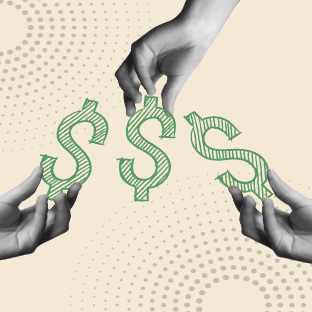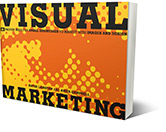Highlights from our session at AFP Icon in Toronto
By David Langton and Deborah Brozina
If you can’t express how you feel about your organization, then how can you expect your donors and supporters to be able to do it? We addressed donor engagement in a case study for the Legal Aid Society that we presented at AFP Icon in Toronto. This article was recently published in AFP Global's Advancing Philanthropy magazine.
Here are some key takeaways.
1. Defining your purpose
First, get everyone in your organization on the same page. You need to make a personal connection with the mission to be able to promote the cause in your own words. T. Clay Buck, the founder of TCB Fundraising, also spoke at the AFP Icon conference. He said, “The most effective fundraising activity is the one that best engages the donor directly and personally with the mission of the organization in alignment with their personal values and identity.” We couldn’t agree more.
We do this with clients by creating a Vision Statement. This is not going on a wall somewhere, or on a website. It connects your team to the critical work you do, how you are distinctive from others, and why it matters. It becomes a deep, personal connection.
We took this challenge on with The Legal Aid Society’s LGBTQ+ Unit on Policy and Law. Their team supports 2000+ public advocate attorneys serving New York City. Their goal is to deliver justice on behalf of the LGBTQ+ clients. They do it in a way that affirms their clients’ identities, provides a safe space, and a network of resources and collaborators. Legal Aid is more than just an advocacy organization. They leverage the knowledge gained from working with clients to address systemic issues with policy and legislation.
We asked the team why they get out of bed every morning to do this work. It isn’t easy. Someone brought up the Martin Luther King, Jr. quote, “Injustice anywhere is a threat to justice everywhere.” Each person lit up. They remembered their ‘why.’
Then, we set out to find their key audiences of supporters who shared this passion.
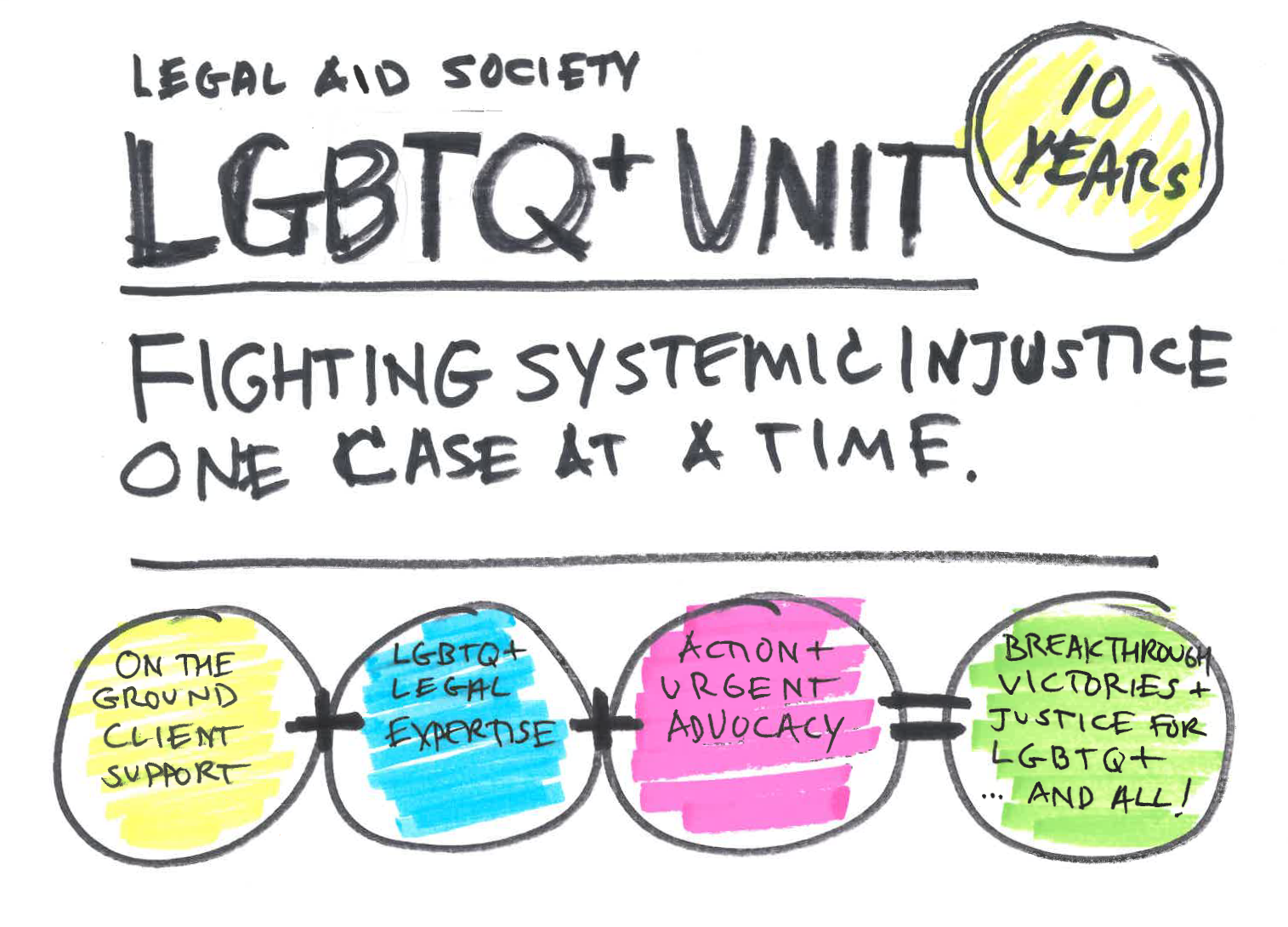
Early sketch based on the vision statement principles for the LGBTQ+ Unit
2. Understanding your audience
Now, it’s time to figure out the different audiences. We don’t just look at ‘large donors’ or ‘institutional giving.’ We look across the spectrum of people who connect to the organization’s mission. For the LGBTQ+ Unit, we looked at 12 different audience segments. They ranged from the expected—a partner from a large law firm — to the unexpected — a retail store manager who is an LGBTQ+ ally and may become a loyal donor and influencer. We looked at vendors, people who may host a fundraising event, people who may attend an event, and people who may show their support by volunteering at an event.
The key to developing a successful segment is detail. We want to understand how that subset of the audience will act and respond to things. We draw from theater and film to create very specific fictional characters, called ‘personas,’ to stand in for a segment. We ask lots of questions of the client team to get inside the heads and hearts of each persona. We examine donor behaviors and attitudes.
According to Indi Young, a qualitative data scientist, “If you know what’s important to the people, instead of what’s important to you and your organization, then you can dream up much more powerful support for them.” Our goal is to understand not only what is important to each persona, but what their days and lives are like. We’ll need to know that when we figure out how and when to reach out to them. We want to know the environment the message is landing in.
We identify each persona’s personal connection to the cause. We start with the three main reasons people donate to nonprofit organizations, according to a Donor Loyalty Study by Abilla. They are:
1. They have a deep passion for the cause
2. They believe the organization depends on their donation, or
3. They know someone affected by the nonprofit’s mission.
These provide a good place to start looking for donor motivations. However, we’ve learned to refine this for each client and each audience persona. Again, it’s all in the details.
3. Creating the core marketing messaging
For The LGBTQ+ Unit on Policy and Law, we group the persona profiles by their motivations. We start to explore themes and set ourselves up to ‘listen’ to see how they respond to these messages. We look at everywhere we are expecting a persona to be digitally. We work with the client based on their experiences with their community to hypothesize the path they will take and set up analytics accordingly. We know everyone doesn’t respond to the same messages. We also know that multiple audiences are on the same channel. We craft core marketing messaging and theme words that will inspire us as we design brands so that all of the personas universally accept the new brand.
4. Creating storylines that connect to your donors
We created multiple storylines (or themes) and showed how the LGBTQ+ unit addresses the issues that matter. For example, one of the storylines is “Nobody is free until everybody is free.” We used the “Walking While Trans” loitering statute and “Medicaid Rights” initiative (where The Legal Aid Society was the first in the nation to secure the right to transition-related healthcare for all) to demonstrate how this work supports the overall idea that “Injustice anywhere is a threat to justice everywhere.”
Getting the messaging and storylines correct are critical to success. Since there is only one website, and Legal Aid uses the same handle on multiple social media channels, we had to make sure the story lines would blend well.
We have all heard that “Content is king,” but it’s way more than that. Bad content can push your potential supporters away. Nearly 75 percent of respondents say they might stop donating to an organization based on poor content, including vague content, dull content, irrelevant content, and inconvenient formatting.
And creating good content can be expensive. You can’t afford to waste funding on content that doesn’t work. Setting up success measures upfront will make sure that you are making the most of your investment. We recommend making content that addresses only the audiences you need. And we create core pieces that can be reused for different purposes and in different channels.
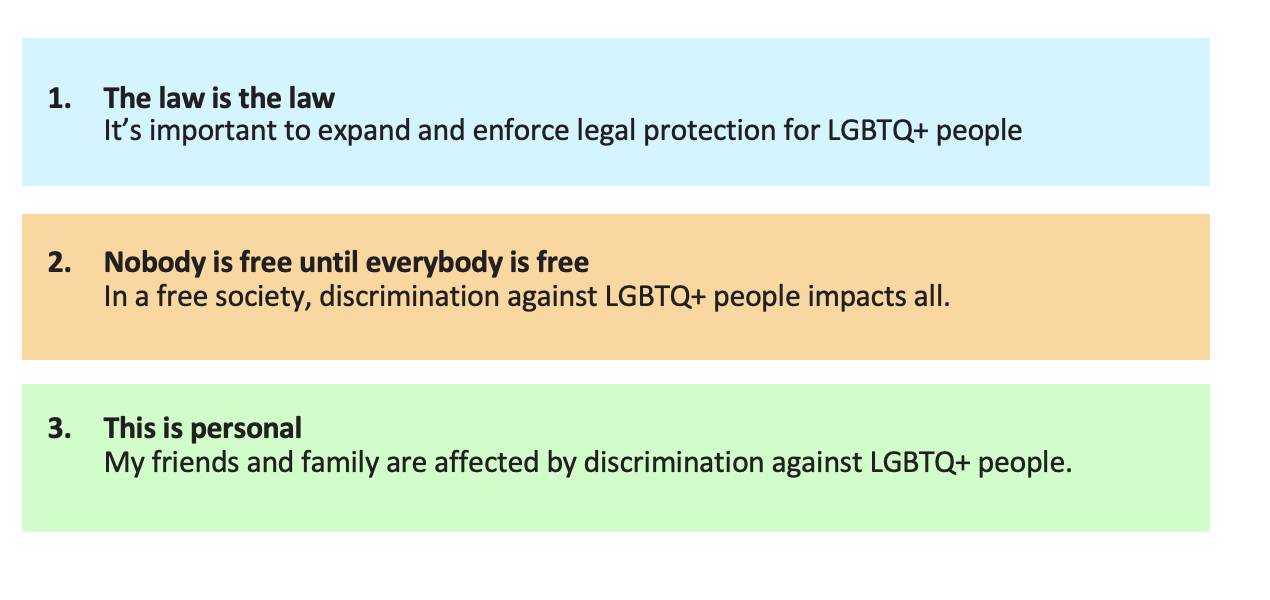
We create multiple storylines and then align each "Persona" with a story that will resonate with them.
5. Solutions that may be put to work
Like many organizations, Legal Aid had tons of content. It was hard for them to sift through all of it to find what they needed for any given pitch. They needed a way to consistently deliver a concise message that reflects their brand.
We reviewed hundreds of pages of legal arguments and philosophy. We distilled it all into concrete actions that move the mission forward. We created deliverables that are easy to read. They highlight what the personas would consider the most important information. We streamlined them down to a core set of documents. Each document could be repurposed in multiple ways over different channels. The final deliverables included a PowerPoint deck, Infographics, and a One-page summary.
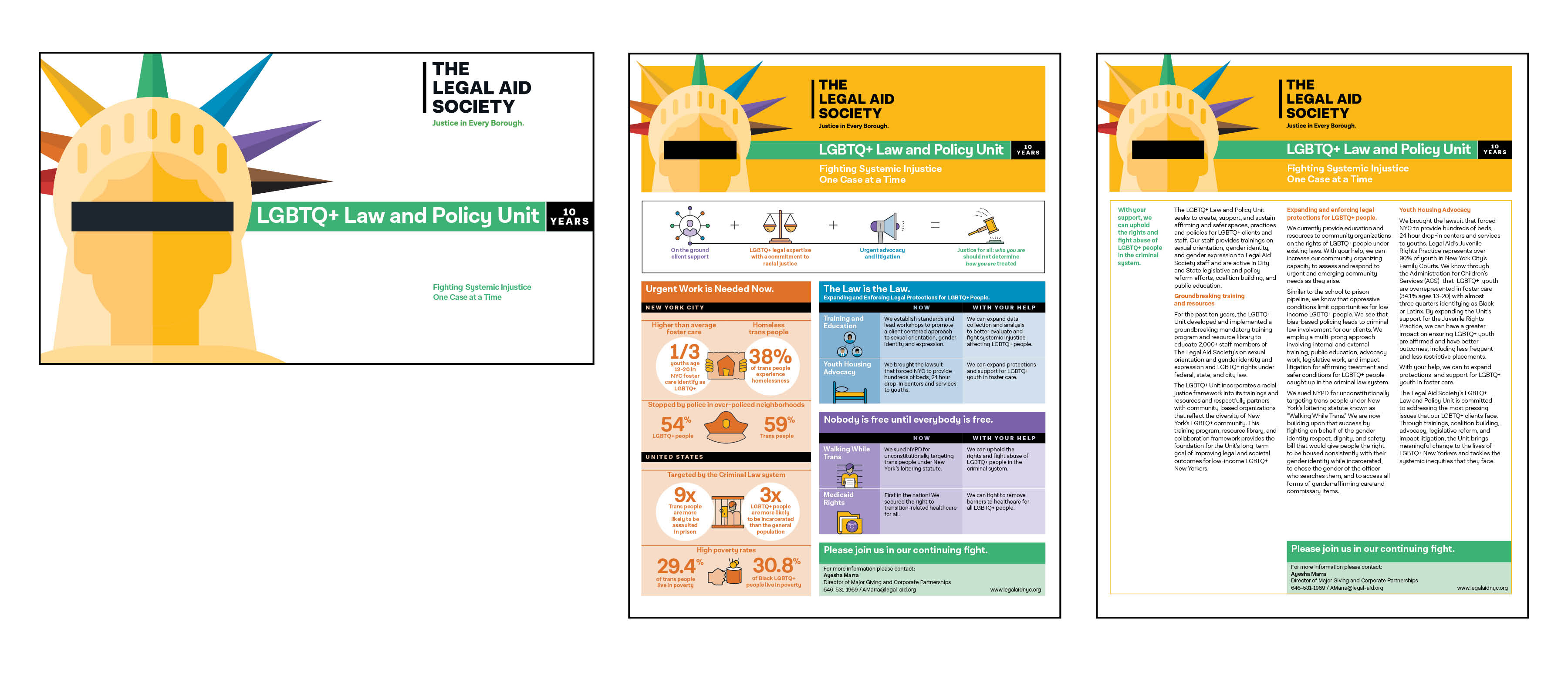
Final Deliverables included a PowerPoint deck, Infographics, and a One-page summary.
Infographics and stats
Clear infographics are a way to present quick stats that highlight key issues. We take the viewpoint of our personas. We consider where, how, and when they are consuming this information. Then, we present the critical information in way that connects each persona to their key issue.
Results
The LGBTQ+ Unit reports that life got easier when the content became more relevant to their audiences. They use it externally for fundraising and outreach. They could put together donor pitches faster, and do more of them as a result.
Internally, they use it to promote and share info about the unit to their 2,000 attorneys. Any of these attorneys may be representing an LGBTQ+ person. They now had a better idea of the resources available to them. Erin Harrist, Supervising Attorney, said, “We took a lot of complex details and turned it into compelling and powerful phrases that accurately convey what we do and why it's important.”
Back to Insights
